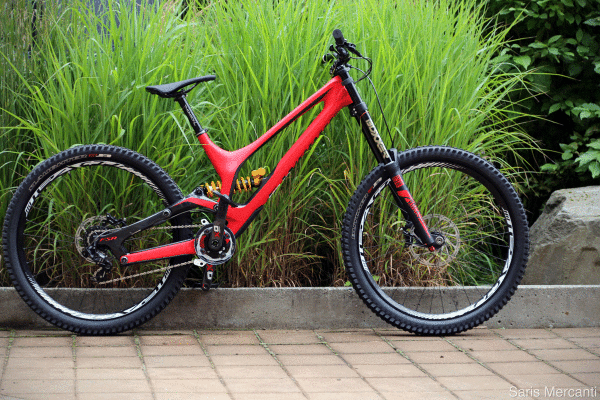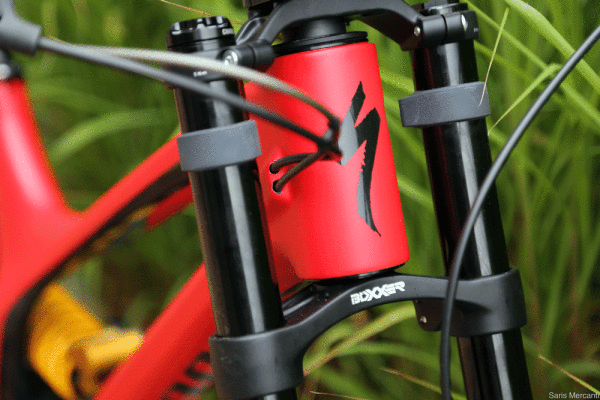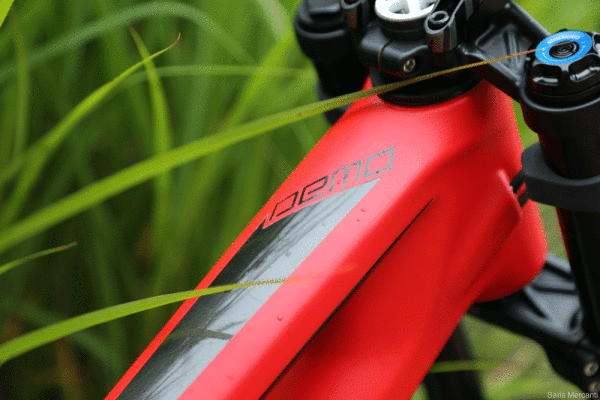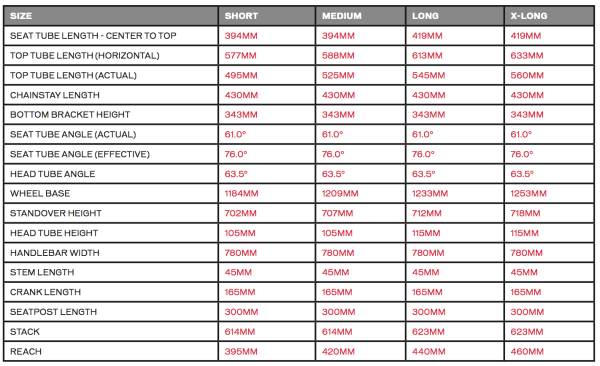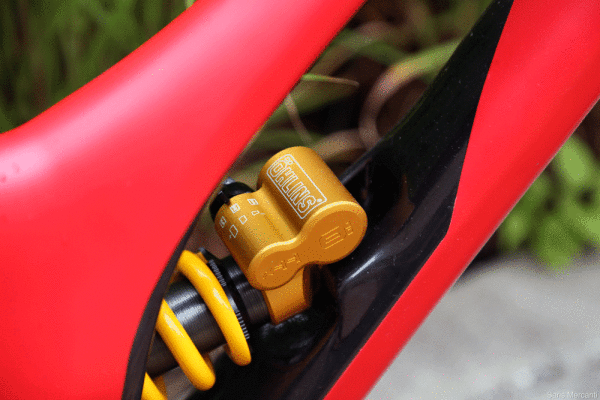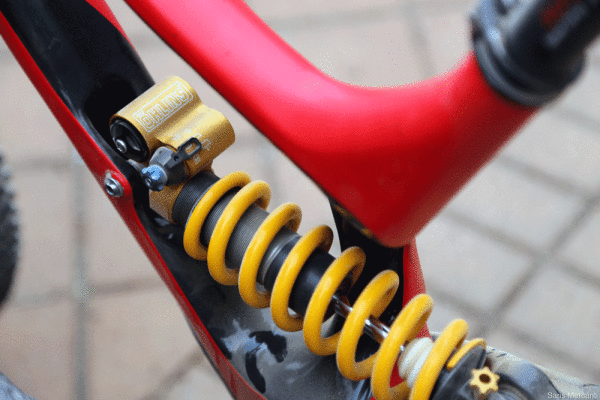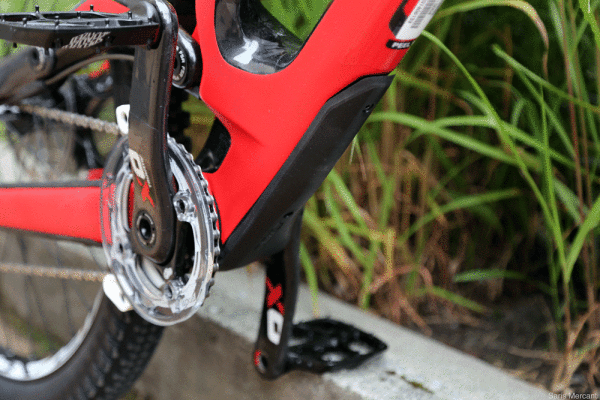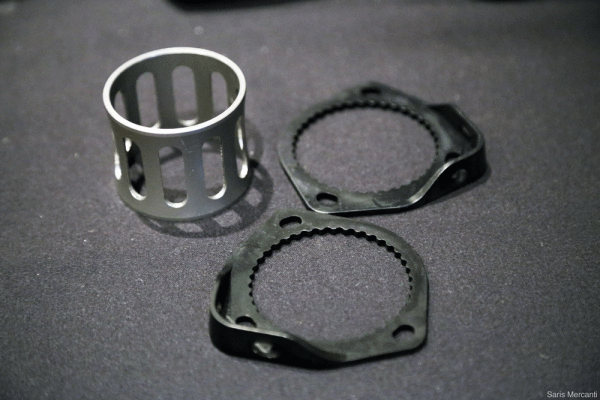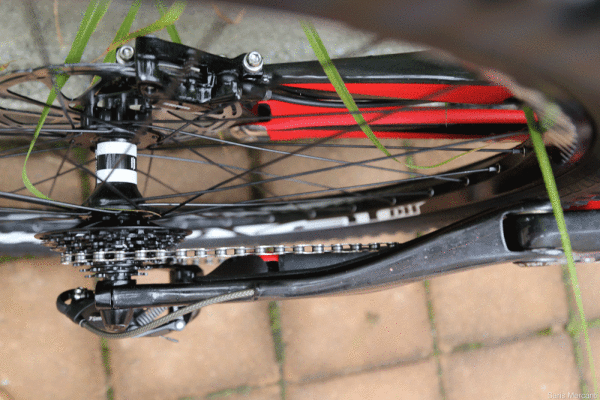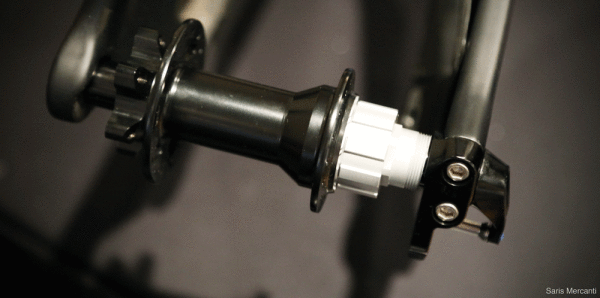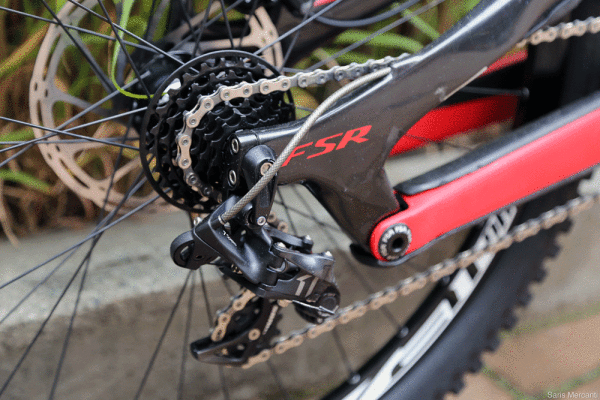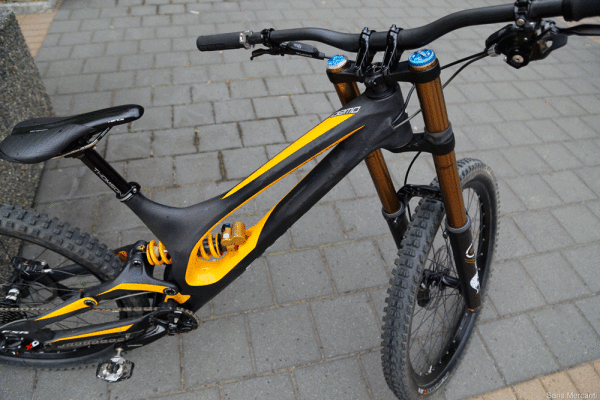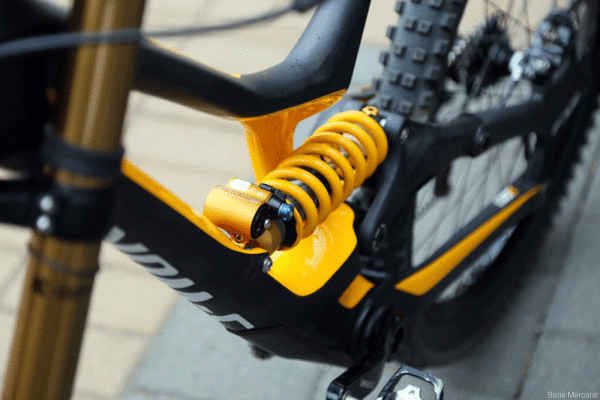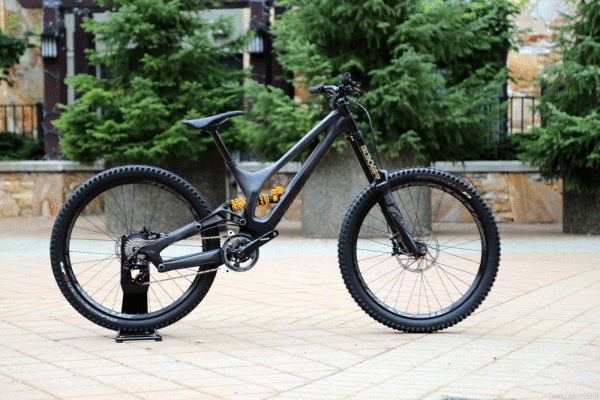Between a paradigm shift in mountain bike wheel sizes, and a gradual evolution in geometry, the landscape of the modern downhill bike is dramatically different than when the last iteration of Specialized’s Demo was introduced.
Working with recently acquired team rider Aaron Gwin and rising star Troy Brosnan, Specialized has created an all new Demo that pays homage to the free hucking and World Cup winning ways of the old 26″ model, but introduces a series of innovations.
Drop past the break for the full run down.
The cables are routed internally through the frame. Special emphasis was paid to ensure that they would not rub on the frame or rattle, and full length internal guides makes the whole installation exercise simple.
The new frames utilize Style-Specific-Sizing, or S3. Rather than using the same sizing nomenclature as American Apparel, the frame sizes are now dependent on the riders style – not height.
This was achieved by pushing the reach of the front triangle out, while retaining virtually the same seat mast length across all of the sizes. To summarily compare the new and outgoing model, the new short size is similar to the previous medium, but has 10mm longer chain stays.
The bikes will be sold in four different frame sizes. To give you an idea of how they fit, Specialized sent over some info on their pro riders preferred setup:
Troy Brosnan (5’7) – rides a medium
Aaron Gwin (5’10) – rides a long as he likes the longer, more stable wheelbase
Mitch Ropelato (5’8) – rides a medium as he likes a tighter, whippy bike
Brad Benedict (6’1) – rides a long in the park and an X-Long for racing
Last year, Specialized and Ohlins partnered together to produce the TTX shock, which was exclusively built for the Demo platform. The end goal was to create a product that had enough tunability for a wide array of terrain, without having excess adjustments that fell outside of the optimal performance range.
During the development of this new Demo platform, Specialized again worked with the legendary suspension manufacturer to retune the adjustment range and make some performance updates.
The newly redesigned TTX has a shorter rebound adjuster for easier spring removal, reduced mid-speed compression for more control on initial hits, and increased high speed compression for increased control when “at the limit.”
In a step away from proprietary standards, the new Demo no longer utilizes a shock yoke, which gives riders the ability to run their preferred shock – whatever it may be
The asymmetrical frame design provides unparalleled access to the rear shock, which simplifies the tuning process, and makes it easy to remove the rear shock for service.
The idea was born during the process where the engineering team began reimagining the FSR linkage, in order to help lower the center of gravity.
At that time, Senior Design Engineer Jason Chamberlain experimented on paper by dropping all of the pivot points by 3″. The design worked, but the main pivot now coincided with the bottom bracket, so Specialized created a concentric main pivot, and reworked the location of the other pivots and links.
This also meant reworking the BB. While commenters often decry the lack of threaded BB on modern bikes in general, according to Specialized, the main reason for going to a BB30 was because of the oversized crank spindle. Having that larger interface provides better stiffness and responsiveness, which is critical for the level this bike will be raced at.
While the BB still utilizes the now standard 83mm width, the rear has moved towards the long forgotten 135mmx12. This setup is lighter than the common 150 or 157mm setup and helps reduce unsprung weight.
One disadvantage with this is that using a standard cassette would throw off the chain line, so all models will utilize a 7 speed drivetrain. Specialized helped pioneer the DH specific gearing, and this is an extension of that. Higher end frames will come equipped with the X01 DH group set, while other models will feature a cassette – sans 3 gears.
With all the changes to the suspension platform, the left and right stays are not connected, so to keep the same level of stiffness as the previous model, the company has gone to a locking square shaped axle.
While nothing can save your derailleur from an errant rock, a forged mount that attaches to the dropout has been included to help keep the derailleur hanger safe.
Other small details include aluminum fittings throughout the frame for the bearings, custom teflon seal to prevent water from entering the pivots, and the use of larger bearings throughout. According to Specialized, the new oversized hardware has helped reduce friction by almost a third.
In addition to Specialized Red, the Demo will be available in this stunning black and yellow two tone, plus a black and green version.
The yellow Ohlin coils are exclusviely made for the TTX shock and are available in 24 lb increments, rather than leaps of 50, so owners will never find themselves compromising because they are inbetween coils.
Prices are still undecided, but the frames will begin shipping in January. The top of the line S-Works model will have full carbon contraction. This helps shave roughly a pound over the previous model, which had an aluminum rear (and at least one other stay). A more affordable option with a carbon front end and alloy rear will also be made available.
The previous 26″ aluminum model is being replaced with a 650B version, that looks virtually identical, but features an updated geometry borrowed from the new asymmetric Demo.
We have bike checks with almost the entire Specialized DH Race Team, plus actual weights for their race bikes, and a few more products to discuss in the next few days. Not to mention some actual ride time on the new beast, so stay tuned for more information.
Special thanks to the entire product and marketing team at Specialized for taking the time to answer all of our questions.
